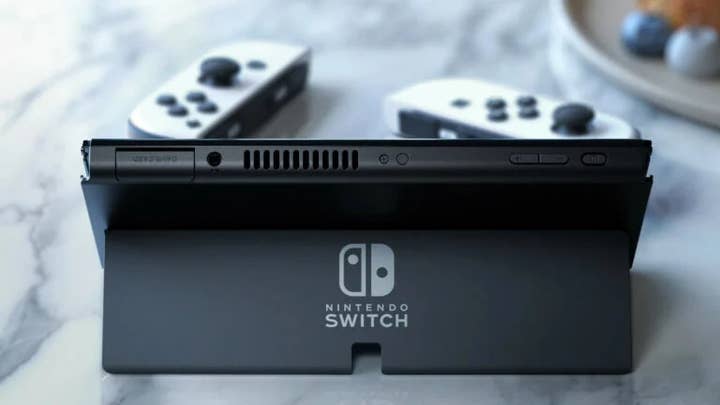Nintendo sales dip 3.6% to $13.1bn due to semiconductor shortage
Profits remained flat at $3.7 billion, platform holder announces 10-1 stock split
At a glance:
- Net sales down 3.6% to $13.1 billion, net profit flat at $3.7 billion
- Biggest year for software sales in a single hardware family in Nintendo history
- 23.06 million Switch units sold into retail -- a 20% decline year-on-year, but second biggest year since console's launch
Nintendo has announced the full-year results for its latest fiscal year, showing a slight dip in overall sales.
For the twelve months ended March 31, 2022, net sales were down 3.6% year-on year to ¥1.7 trillion ($13.1 billion).
Naturally, the majority of this came from its dedicated video game platform business, almost entirely driven by Switch, with sales of ¥1.6 trillion ($12.3 billion) which is also down 3.6%.
Mobile and IP-related income saw a sharper decrease of 6.5%, down to ¥53.5 billion ($411.1 million). The company did see a 55.9% increase in sales from its playing cards business, but this only accounted for ¥2.7 billion ($20.7 million).
Net profit remained flat with only a 0.6% decrease, reported at ¥477.6 billion ($3.7 billion).
Hardware
In FY2022, Nintendo sold 23.06 million Switch units into retail -- a year-on-year decline of 20%.
The platform holder said shipments were affected by the ongoing shortage of semiconductor components and other parts, as well as the steep comparison with FY2021, which benefited from both the stay-at-home measures necessitated by the pandemic and the recent launch of Animal Crossing: New Horizons, which debuted less than two weeks before that financial year began.
Even so, FY2022 marked the second highest year of Switch hardware sales since launch -- the highest, of course, being the previous year.
Over the past twelve months, the standard Switch sold 13.56 million units into retail, a decrease of 33.3%. The Switch Lite saw hardware sales plummet 56.5% to 3.7 million.
Meanwhile, the Switch OLED, which debuted in October 2021, sold 5.8 million units in its first six months.
Lifetime sales of the Switch now stand at 107.65 million, a good six million units ahead of the Wii, Nintendo's previous biggest-selling home console.
Software
While hardware suffered declines, software shipments saw a slight uptick of 1.8% to 235.07 million.
Nintendo reports this is the highest level of software sell-through for a single hardware family in its history.
Digital sales saw a year-on-year increase of 4.5%, rising to ¥359.6 billion ($2.8 billion). Downloads accounted for 42.6% of all software sales, ever so slightly down from the 42.8% recorded last year.
The best-selling game of the year was the duology of Pokémon Brilliant Diamond and Shining Pearl, which has shifted 14.65 million units since its launch in November. It already stands as the eighth biggest-selling Switch game of all time.
In close second was Pokémon Legends: Arceus, which launched at the tail end of January and has already shipped 12.64 million units.
Two other new releases from the past fiscal year were highlighted, with Mario Party Superstars selling 6.88 million and The Legend of Zelda: Skyward Sword HD shifting 3.91 million.
As always, back catalogue games were also among Nintendo's biggest sellers, with Mario Kart 8 Deluxe shifting another 9.94 million units throughout the year, bringing its lifetime sales up to 45.33 million. Animal Crossing: New Horizons sold another 6.01 million, with lifetime sales now at 38.64 million.
In total, 39 Switch games sold over one million units in FY2022, including 26 Nintendo titles and 13 third-party games.
Switch's lifetime software sales rose to 822.18 million. Annual playing users increased to 102 million -- the first time it's been over 100 million since Switch launch, having reached 87 million last fiscal year.
Fourth quarter
Looking specifically at the three months ended March 31, similar patterns from the full-year results can be seen across hardware and software.
Total hardware units shipped were down 13.1% year-on-year to 4.11 million units, including 1.81 million OLED and 1.77 million standard models of Switch. Software sales were up slightly by 1.7% to 55.7 million units.
Digital sales accounted for ¥104.6 billion ($803.1 million), 56.6% of which was for downloadable versions of titles that are also available at retail -- the rest encompasses download-only games, add-on content and Nintendo Switch Online subscriptions.
By comparison, Q4 FY2021 saw digital sames of ¥88.1 billion ($676.5 million), of which 64.4% was for download versions of boxed software.
Stock split
Nintendo also announced a 10-for-1 stock split, effective of October 1, 2021. This means for every share investors own, they now own ten.
It's a move made to improve the liquidity of the company's shares, as well as make it more affordable for smaller investors to buy stock in the firm.
Reuters reports Nintendo is the latest in a string of tech firms to perform such a split, with Amazon, Google and more having made a similar decision in recent months.
Forecast
In FY2023 -- the twelve months ending March 31, 2023 -- Nintendo expects net sales of ¥1.6 billion ($12.3 billion), which would mark a 5.6% decline compared to FY2022.
The platform holder expects to sell 21 million Switch units over the course of the year. This is the second year in a row Nintendo has predicted it will sell fewer consoles.
Net profit was forecast at ¥340 billion ($2.6 billion), down 28.8% year-on-year.
The line up for this financial year includes the recent release of Nintendo Switch Sports, the launch of Mario Strikers: Battle League and Fire Emblem Warriors in June, Xenoblade Chronicles in July, Splatoon 3 in September, and Pokémon Scarlet and Violet towards the end of the year. Bayonetta 3 is also expected to debut in 2022.
The company said the ongoing component shortage, and any future waves of COVID-19, could further affect its performance.

